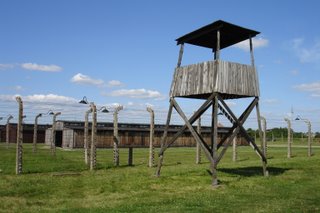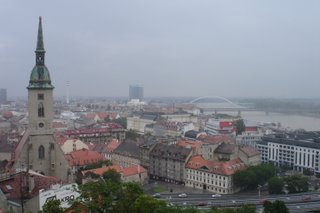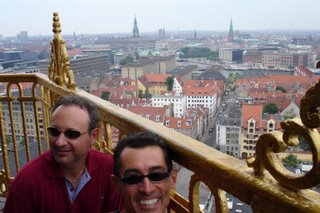


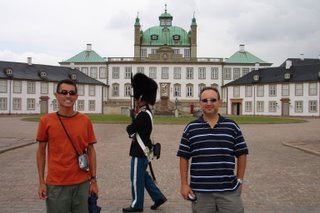
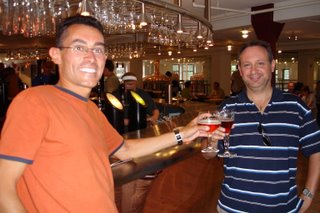 Every male child in Copenhagen (pop 1.8m) is either called Frederick or Christian!!! But there´s more to Denmark than this! It is the land of Hans Christian Anderson (who is in the Guiness Book for the second most translated author behind the Bible!), Jorn Utzon (who designed the Opera House), first country in the world to legalise same sex marriages in 1989 (Paul and I saw two men wheeling a pram, one dressed as "the mother") and of course, Prince Frederick and our very own Princes Mary of Tazzie!
Every male child in Copenhagen (pop 1.8m) is either called Frederick or Christian!!! But there´s more to Denmark than this! It is the land of Hans Christian Anderson (who is in the Guiness Book for the second most translated author behind the Bible!), Jorn Utzon (who designed the Opera House), first country in the world to legalise same sex marriages in 1989 (Paul and I saw two men wheeling a pram, one dressed as "the mother") and of course, Prince Frederick and our very own Princes Mary of Tazzie!In the top photo are some amazing sites: the 19th Century Tivoli ammusement park (that inspired Walt Disney to build Disneyland), no less than three palaces (one used for Parliament, one the winter residence of the royals and the other a storehouse of their possessions!), Christianhavn (a hippy / drugs harbourside suburb that pursued independence in 1971, second photo), Stroget (the longest pedestrian mall in the world - except that trucks are allowed in each morning!!!), Frederikskirke (church with world's third largest dome). The Danes also have a special seating section at the very front of their trains called "the quiet class": we used trains to get from our shoebox hotel to the city and were "told off" for talking too loudly in the middle of peak hour - boy, give us a break!
In our spare time we also visited three countryside castles: Frederiksborgslot in Hillerod (third photo, most grande, built by King Christian IV around 1600 and coronation site for all royalty from 1671 to 1870), Fredensborgslot where Fred and Mary live most of the time (fourth photo) and Kronborgslot in Helsingor (not shown). We finished our stay with a few litres of freshly brewed beer at Carlsberg / Jocabson brewery (last photo). Distance travelled so far: 12,061km.





